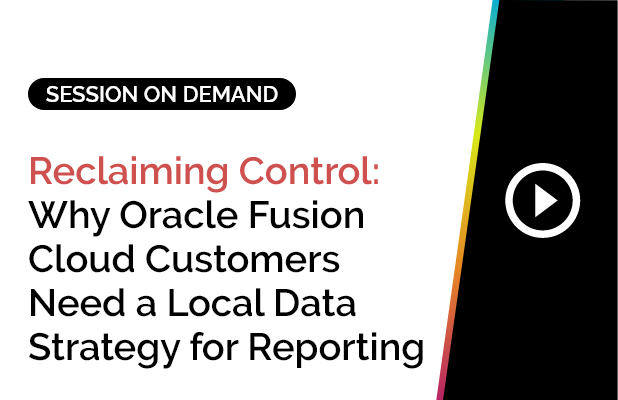Turnover rate is a top performance indicator for many HR organizations. It’s also one of the oldest HR KPIs. Along with headcount, we’ve been tracking turnover – formerly known as attrition – for decades.
I know this from personal experience. While an Assistant Personnel Coordinator in the 1980s, I spent two days every month preparing an attrition report using a calculator. When finished, I sent my handwritten report to a secretary to be typed into a memo, copied, and inter-office mailed to about 20 recipients. This was a lot of effort to get those few essential numbers.
Turnover is calculated by dividing average headcount for a period by the number of exits. It’s typically annualized so that a turnover rate of 10% means an organization loses 10% of its workforce over a year. For some high-volume positions, the turnover rate can be very high – over 500%.
Thanks to HR technology, we all have access to turnover rates without using calculators and printouts.
However, most of us measure only the overall turnover rate, which doesn’t tell the whole story. Overall turnover contains good exits, bad exits, and inevitable exits in one lump. We don’t know the ideal target rate for this KPI. We only know that a little turnover is good and a lot of turnover is bad.
Here are other types of easily measurable turnover:
Early turnover
measures the exit rate of new employees who haven’t yet had a performance evaluation. These people exited before we know how good they were. This number should be low when compared to overall turnover. A high early turnover rate may indicate recruiting or onboarding issues.
Regrettable turnover
examines the voluntary exit rate of good performing employees. The ideal number for this KPI is 0%. There is no “good” regrettable turnover.
Inevitable turnover
qualifies natural exit causes that can’t be easily avoided, such as employee retirement or death. This type of turnover rises in industries with aging skilled workforces.
Today, many HR leaders don’t measure overall turnover because it’s too vague to be actionable. Instead, they use early & regrettable turnover to identify issues. And they keep an eye on inevitable turnover.
How to Measure the Right Kind of Turnover: Employee Attrition Meaning & Metrics
Understanding employee attrition is a critical performance indicator for many HR organizations. While often used interchangeably with turnover, deciphering the nuances of employee attrition is key to effective talent management. As one of the oldest HR KPIs, alongside headcount, we’ve been tracking these movements for decades.
I know this from personal experience. As an Assistant Personnel Coordinator in the 1980s, I spent two days every month preparing an attrition report using a calculator. When finished, I sent my handwritten report to a secretary to be typed into a memo, copied, and inter-office mailed to about 20 recipients. This was a lot of effort to get those few essential numbers.
Thankfully, the days of manual calculations and handwritten reports are largely behind us. Modern workforce analytics platforms have revolutionized how organizations track and analyze talent attrition and other critical HR metrics. These advanced solutions move beyond basic arithmetic, offering sophisticated dashboards and reporting
capabilities that provide real-time insights into your workforce dynamics, allowing HR leaders to identify trends and make data-driven decisions with unprecedented efficiency.
Clarifying Employee Attrition vs. Turnover
While often used interchangeably, it’s crucial to understand the distinct definitions of employee attrition and turnover in HR analytics:
- Employee Attrition: This refers specifically to the voluntary departure of employees from an organization. It typically includes resignations where an employee chooses to leave for reasons such as career advancement, better opportunities, or personal circumstances. Understanding the root causes of voluntary talent attrition is vital for improving retention strategies.
- Turnover: This is a broader term that encompasses all employee departures from an organization, both voluntary and involuntary. This includes voluntary resignations (attrition), involuntary terminations (e.g., performance-related, layoffs), and inevitable exits (e.g., retirement, death).
Turnover rate is calculated by dividing the average headcount for a period by the number of exits, typically annualized. Most organizations commonly measure only the overall turnover rate, which often doesn’t tell the complete story. This broad metric lumps together good exits, bad exits, and inevitable departures, making it difficult to pinpoint specific issues or define an ideal target rate. We only truly know that a little turnover can be healthy, while high turnover often signals underlying problems.
Types of Employee Turnover and Attrition
To gain actionable insights, it’s essential to segment turnover into more specific categories, allowing HR leaders to understand the why behind departures and address them effectively. These types of turnover provide a clearer picture of employee attrition meaning within your organization.
Early Turnover
Early turnover measures the exit rate of new employees who depart before they have even had their first performance evaluation. These individuals leave the organization before their impact or fit could be fully assessed. A high early turnover rate is a significant red flag, often indicating issues in:
- Recruiting Processes: Misalignment between job descriptions and actual roles, or ineffective candidate screening.
- Onboarding Programs: A lack of support, inadequate training, or a poor cultural integration experience for new hires.
Ideally, this number should be significantly lower than the overall turnover rate.
Regrettable Turnover
Regrettable turnover examines the voluntary exit rate of high-performing, valuable employees whose departure negatively impacts the organization. This is a critical aspect of employee attrition that every company strives to minimize. The ideal number for this KPI is 0%, as there is no “good” regrettable turnover. These are the employees you want to retain, and their departure can lead to:
- Loss of institutional knowledge.
- Decreased team morale.
- Increased workload for remaining staff.
- Significant costs associated with recruitment and training new hires.
Understanding the causes of regrettable turnover is paramount for developing targeted retention strategies.
Inevitable Turnover
Inevitable turnover accounts for natural exit causes that are largely unavoidable and not typically a reflection of organizational issues. This includes events such as:
- Employee retirement.
- Death.
- Relocation for family reasons.
This type of turnover may naturally rise in industries with an aging skilled workforce, and while it contributes to the overall turnover rate, it is generally not a cause for concern in the same way as high early or regrettable turnover.
Key Takeaway
Understanding the difference between overall turnover and specific types of employee attrition is crucial for effective talent management. By utilizing workforce analytics, organizations can move beyond basic numbers to identify root causes and implement targeted strategies to retain valuable talent.
Employee turnover analysis is crucial for workforce planning as it helps organizations understand the reasons behind employees leaving, enabling them to develop effective recruitment and retention strategies. This analysis directly impacts cost reduction by improving retention rates and informing strategic decisions about workplace dynamics.
People analytics features that are most effective in predicting and preventing employee turnover include analyzing exit risk, understanding reasons for departure, and identifying factors influencing retention. By leveraging predictive models and data-driven insights, organizations can proactively address issues to reduce regrettable turnover.
SplashBI's people analytics can help distinguish between regrettable attrition and performance-managed exits by analyzing employee data to identify key drivers and predict attrition risk, enabling targeted retention investments.
Employee attrition refers to the voluntary departure of employees, while employee turnover encompasses all separations, both voluntary and involuntary. Attrition is a subset of turnover, focusing specifically on employees choosing to leave.













